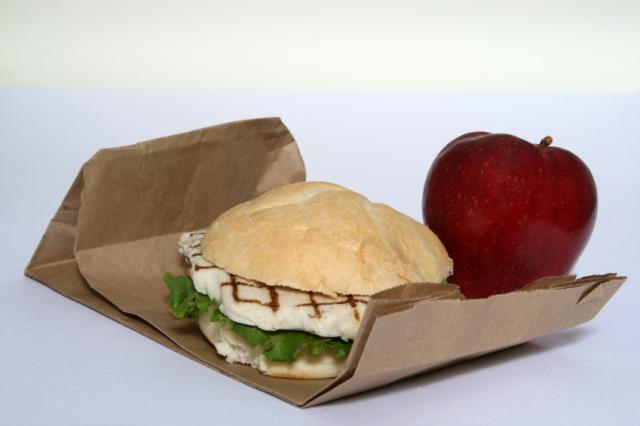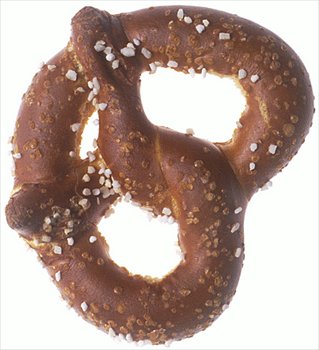The often unhealthy food choices youth athletes are offered at concession stands can be gradually replaced with healthier items without a loss of revenue, profits, or customer satisfaction, suggests a first-of-its-kind pilot study. (Laroche 2014).

Researchers at the University of Iowa worked with the booster club in Muscatine, Iowa to add eight new healthy foods (apples, carrots and dip, chicken sandwiches, granola bars, pickles, soft pretzels, string cheese and trail mix) to the concession stand menu durning the 2009 fall season at Muscatine High football games, volleyball matches and swim meets.
At the same time, the booster club replaced unhealthy ingredients in certain existing food offerings, substituting canola oil for coconut oil bars in the popcorn, and swapping the cheese in the nachos, eliminating trans fat from the products.
The group advertised the new offerings in a poster and marketing campaign with the slogan, "Great taste, more variety."
Gamble pays off
Analyzing the sales data, Cornell University's Food and Brand Lab found that sales and revenues remained about the same during the first year and that profits remained intact as well. Average sales per high school varsity football game rose to $6,849 in 2009 from $6,599 the year before, an increase of 4 percent. Moreover, the healthy foods made up 9.2 percent of concession sales, suggesting that the new products could boost overall sales. Parents and students surveyed for the study also said they were happy with the healthy-food choices.
While all the healthy foods sold, chicken sandwiches and pretzels dominated, accounting for 7.6 percent of all food sales, sales data showed. Sales of other items varied according to weather, venue and product visibility. Granola bars and trail mix sold better indoors, while carrots and dip were popular in mild, outdoor weather. String cheese suffered from being tucked away in a refrigerator. Pickles were especially popular with students. And, no one noticed the healthier changes to the popcorn and nachos, which continued to sell briskly.
Pretzel logic
"This study is the first to evaluate the results on satisfaction and sales of making changes to concession-stand offerings in school settings," writes the research team, led by Dr. Helena Laroche, assistant professor in internal medicine and pediatrics at Iowa.

"It provides preliminary evidence that altering offerings and adding healthy options can be done by working in concert with parent groups. Furthermore, these modifications can provide reasonable revenue and profit margins without negative effects on customer satisfaction," she said.
"Booster groups have worried that healthier items wouldn't sell, and it's important for them to make money to support student activities," Laroche says. "This shows it can be done."
According to news reports, six other school booster clubs in Iowa have added healthy foods to their concession menus, following a how-to guide written by Laroche based on her experience in Muscatine.
A 2006 study by the Centers for Disease Control and Prevention, 23 states recommend a prohibition on the sale of junk food at concession stands, but only 4 (Alabama, California, Louisiana, and Maine) ban such sales.
Overcoming resistance
Like booster clubs across the United States, the money raised by the Muskie Bosters directly supports schools' athletic and extra-curricular programs like band and choir.
"I don't think without [revenue from] booster clubs, especially with how schools are cutting things, they'd be able to do it," says Kate Hansen, a former president of the Muskie Boosters, which raises about $90,000 annually for athletics and other outside school activities.
With crucial dollars at stake, booster clubs have been reluctant to tinker with a reliable cash generator like concession sales, especially because there is a widely-held fear that switching to healthier foods would hurt both sales and customer satisfaction.
A 2012 survey of parent attitudes about the food and beverages available to and consumed by youth athletes when they participate in organized sports (Thomas, 2012), found that most questioned the feasibility of providing more healthy concession stand fare, citing not just a concern over losing profits by selling healthful food, but other factors as well, including the limited availability of healthful, non-perishable, prepackaged food at stores where concession food is typically bought (e.g. large discount stores such as Sam's Club). Many told the University of Minnesota researchers that it would be unrealistic to expect apples to sell when they are sitting right next to candy, salty snacks, and nachos in the concession stand.
"The Iowa study shows that it is possible to provide a healthier mix of food and beverages at concessions stands and still make money for organizations," said Toben F. Nelson, Sc.D, author of the Minnesota study, which is part of the university's Healthy Youth Sports Study. "This finding helps counter one of the biggest obstacles to improving what is available at concessions stands we hear from parents and organization leaders -- the fear of lost revenue."
Parents: creating the change they want
Importantly, Laroche said, we didn't "go for a full court press. We didn't ask them to sell nothing but carrots." Boosters are "busy people," she said, so it is important to make it easy, by sitting down with them and discussing the practicalities of adding healthier food items, including how to market them, what equipment would be needed, where to go to purchase supplies. "That way the "boosters were vested in its success, and we weren't imposing the changes from the outside." In the end, Laroche said, "All credit goes to the Muskie Boosters."
"Parents can lead on this issue by making healthy choices available, volunteering to have more fresh fruit, vegetables, whole grains and healthy beverages in concession stands, and asking for them where they are not available, says Nelson.
"Most youth sports organizations are run by parents, so parents can take on these roles and create the change they want to see. I think there is more support out there for healthy choices than some realize."
Laroche agreed. She recommended that parents speak up to request some healthier items, and ask students to get involved. She pointed to a campaign that students at one northern Iowa school to add healthier menu items. "Someone needs to lead," Laroche said.
Five and Ten
The study shows how it is possible for youth sports organizations to stock concession stands with healthier food choices. "Instead of trying to squeeze every last nickel out of families in sport by selling them unhealthy food, sport organizations could instead choose to create an environment that is healthy for kids and their families. Parents can take an active role in trying to make this happen," says Nelson.
"If you're a concession-stand sponsor, and you want people to eat better, and you want to make more money, add at least five healthy items," recommends Brian Wansink, the Cornell lab's director, marketing professor, and one of the Iowa study's co-authors. "There's got to be a critical mass, and we find that five's a very lucky number, and ten is even better."
To be sure, classic concession items - hot dogs, pizza and candy bars - continued to sell well. But the Muskie Booster's Hansen says she noticed a shift in people's perception and attitudes about the new offerings.
"I think what it comes down to is people want to have choices," says Hansen, who was the Muscatine booster club president during the study. "We still sell hot dogs, we still sell pizza, we still sell candy bars. But everything in life is about choices, and it's important to put choices out there that meets everybody's needs and wants, and more people, it seems, want to lead healthier lives."
Don't be afraid to change
"These results show that there is great promise in improving the nutrition at a concession stand ... not by replacing less healthy foods with healthier foods [but] ... by making ingredient substitutions and offering a critical mass of fun and healthier foods," and "offer a compelling test of concept for concession stand operators as well as food suppliers ... that [also] has relevance for concession operators for professional and college sports as well as music and other entertainment events," " the Iowa study concludes.
"I hope youth sports organizations pay attention to this finding and use it to move toward creating better food environments for kids and families. Clearly it can be done," Nelson said.
Laroche acknowledged that some groups may not be ready to make changes. The takeaway message for parents from the study, Laroche said, was "don't be afraid to change."
Sources
"Healthy Food Is Good for You - and Can Sell, Too." Newswise. http://www.newswise.com/articles/view/614723/?sc=sphr&xy=10013227U (accessed March 28, 2014)
Centers for Disease Control and Prevention. State-level school health policies and practices: a state-by-state summary from the school health policies and programs study 2006. Atlanta: US Department of Health and Human Services, 2007. (http://www.cdc.gov/healthyyouth/shpps/2006/summaries/pdf/NS_State_Level_...)(accessed March 30, 2014).
Laroche H, Ford C, Hansen K, Cai X, Just DR, Hanks AS, Wansik B. Concession stand makeovers: a pilot study of offering healthy foods at high school concession stands. J Public Health 2014;doi:10.1093/pubmed/fdu015 (first published online March 12, 2014)
Thomas M, Nelson TF, Harwood E, Neumark-Sztainer D. Exploring Parent Perceptions of the Food Environment in Youth Sport. J Nutrition Ed Behav. 2012;44(4):365-371.








